Delving into the realm of industrial west furniture, this guide unveils the distinctive features, materials, and styling tips that define this captivating design aesthetic. From its origins to its enduring popularity, industrial west furniture seamlessly blends functionality and form, creating spaces that exude both comfort and character.
Industrial West Furniture
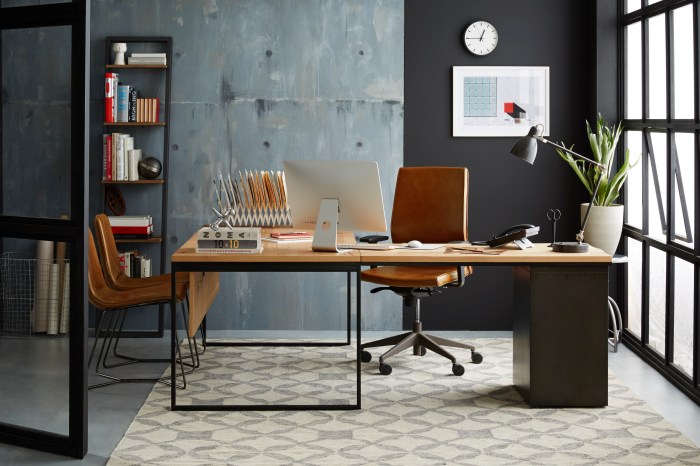
Industrial West furniture, a style that emerged in the early 20th century, is characterized by its raw and utilitarian aesthetic, drawing inspiration from industrial machinery and urban landscapes.
Its defining features include:
- Origins:Industrial West furniture originated in the late 19th century, when factories and warehouses began to be converted into living spaces. The raw and unfinished look of these industrial buildings inspired the development of this furniture style.
- Materials:Industrial West furniture is typically made from sturdy materials such as metal, wood, and leather. Metal frames, exposed hardware, and distressed finishes are common design elements.
- Aesthetics:Industrial West furniture has a raw and unfinished look, with a focus on functionality over ornamentation. The use of metal and wood creates a sense of industrial strength and durability.
Materials and Construction: Industrial West Furniture
Industrial West furniture embraces a blend of robust materials and meticulous construction techniques to achieve its distinctive aesthetic. Metal, wood, and leather serve as the primary building blocks, contributing to the durability and functionality of these pieces.
Metal frames, often crafted from wrought iron or steel, provide a sturdy foundation for the furniture. The use of rivets, bolts, and exposed joints adds to the industrial charm while ensuring structural integrity. Wood, with its natural warmth and versatility, is employed for tabletops, shelves, and accents.
Its grainy texture and rich hues complement the metallic elements.
Finishes and Treatments
Industrial West furniture undergoes various finishing processes to enhance its durability and aesthetic appeal. Powder coating, a durable and scratch-resistant finish, is commonly applied to metal surfaces. This coating protects against corrosion and adds a sleek, matte finish.
Wood surfaces are often treated with stains or lacquers to highlight their natural grain and protect them from wear and tear. Leather upholstery, a signature element of industrial West furniture, adds a touch of sophistication and durability. Its supple texture and patina develop over time, adding character to the piece.
Popular Furniture Types
Industrial west furniture is characterized by its bold and utilitarian aesthetic, which is reflected in its furniture designs. Common furniture types associated with this style include:
Chairs, Industrial west furniture
- Metal chairs with exposed rivets and simple lines, such as the Eames Eiffel Chair.
- Wooden chairs with industrial-inspired details, such as the Bertoia Bird Chair.
- Leather chairs with distressed or vintage finishes, such as the Chesterfield Sofa.
Tables
- Metal tables with solid wood tops, such as the Saarinen Tulip Table.
- Wooden tables with metal accents, such as the Noguchi Table.
- Concrete tables with a raw and industrial look, such as the Parsons Table.
Sofas
- Leather sofas with a tufted or distressed finish, such as the Chesterfield Sofa.
- Metal sofas with exposed frames, such as the Eames Lounge Chair.
- Fabric sofas with industrial-inspired patterns, such as the Barcelona Sofa.
Storage Units
- Metal cabinets with perforated doors, such as the USM Haller Cabinet.
- Wooden cabinets with metal accents, such as the Crate & Barrel Crate & Barrel.
- Concrete shelves with a raw and industrial look, such as the West Elm Parsons Shelf.
These furniture pieces combine form and function to create a cohesive industrial look. Their sturdy construction and simple lines provide both durability and a sense of authenticity, while their industrial-inspired details add a touch of urban sophistication.
Home Decor and Accessories
The industrial west aesthetic extends beyond furniture to encompass a range of complementary home decor items that enhance the raw and utilitarian charm. These elements work together to create a cohesive and stylish space that evokes the spirit of industrial design.
Lighting Fixtures
Lighting plays a crucial role in shaping the ambiance of an industrial west interior. Exposed Edison bulbs suspended from metal fixtures add a touch of vintage charm. Pendant lights with large shades made from metal or glass provide ample illumination while creating a striking focal point.
Track lighting with adjustable heads allows for customizable lighting solutions that accentuate architectural features.
Rugs
Rugs add warmth and texture to industrial west spaces. Choose rugs with geometric patterns or neutral colors to complement the clean lines of the furniture. Natural fiber rugs, such as jute or sisal, add a rustic touch. Cowhide rugs provide a unique and eye-catching accent.
Layering rugs can create depth and visual interest.
Artwork
Artwork can infuse personality and character into an industrial west space. Choose pieces that reflect the raw and utilitarian aesthetic, such as abstract paintings with metallic accents or black-and-white photography. Vintage posters or signs add a touch of nostalgia. Metal sculptures or wall hangings can provide a sculptural element that complements the industrial vibe.
Incorporating Industrial West Elements
Incorporating industrial west elements into existing home decor schemes can be achieved through subtle touches. Add a few pieces of industrial furniture, such as a metal coffee table or a leather armchair. Introduce lighting fixtures with exposed bulbs or pendant lights with large shades.
Add rugs with geometric patterns or neutral colors. Display artwork that reflects the industrial aesthetic. By combining these elements, you can create a cohesive and stylish space that blends the raw and refined.
Color Palette and Patterns
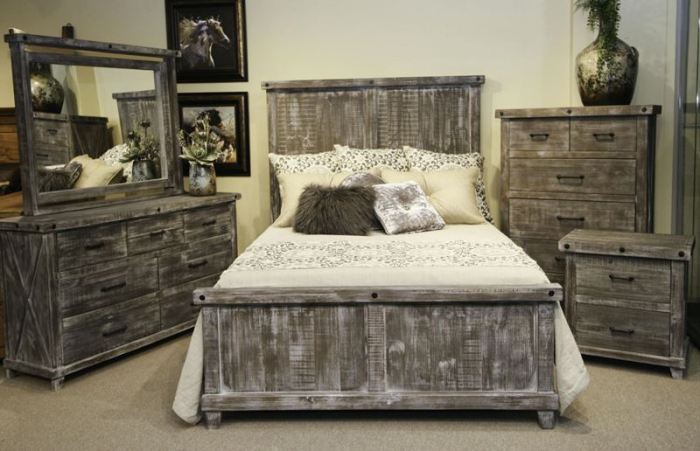
The industrial west furniture style embraces a neutral color palette with an emphasis on shades of black, white, gray, and brown. These neutral tones provide a versatile backdrop for incorporating metallic accents, such as brass, copper, and iron, which add a touch of warmth and sophistication.
Patterns are also commonly used in industrial west furniture to add visual interest. Geometric designs, such as stripes, chevrons, and hexagons, are popular choices. Distressed textures, such as faux rust or weathered wood, add a touch of character and authenticity to the overall design.
Using Color and Patterns to Create Ambiance
The choice of color and patterns can significantly impact the mood and ambiance of an industrial west-style space. For example, using darker neutrals, such as black or gray, with metallic accents can create a more masculine and industrial feel. Conversely, incorporating lighter neutrals, such as white or beige, with softer metallics, such as brass or copper, can create a more inviting and welcoming atmosphere.
Patterns can also be used to create different effects. Geometric patterns, such as stripes or chevrons, can add a sense of energy and movement to a space. Distressed textures, such as faux rust or weathered wood, can create a more rustic and lived-in feel.
Styling Tips
Incorporating industrial west furniture into your home can be a great way to create a stylish and unique space. Here are a few tips to help you get started:
Balancing Industrial with Other Styles
Industrial west furniture can be paired with a variety of other design styles to create a harmonious look. For example, you could mix industrial pieces with rustic furniture for a warm and inviting space, or with modern furniture for a more sleek and contemporary look.
Creating Focal Points
One way to add visual interest to an industrial west interior is to create focal points. This could be done by using a large piece of furniture, such as a sofa or armoire, as a centerpiece. You could also use a piece of art or a rug to draw attention to a particular area of the room.
Adding Personal Touches
Finally, don’t forget to add your own personal touches to your industrial west interior. This could be done by adding some colorful pillows or throws, or by displaying some of your favorite photos or artwork. By adding your own personal style, you can create a space that is both stylish and unique.
Last Recap
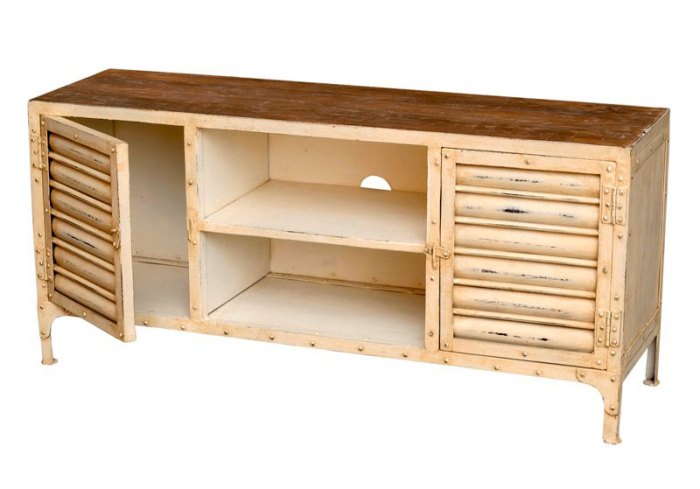
Incorporating industrial west furniture into your home décor not only elevates the aesthetics but also adds a touch of timeless charm. By understanding the defining characteristics, materials, and styling techniques, you can effortlessly create a space that reflects your unique personality and style.
FAQ Summary
What are the defining characteristics of industrial west furniture?
Industrial west furniture is characterized by its use of raw materials, exposed hardware, and distressed finishes. Metal frames, reclaimed wood, and genuine leather are commonly used, creating a rugged and utilitarian aesthetic.
What are the most common furniture types associated with industrial west style?
Common furniture types include chairs, tables, sofas, and storage units. These pieces often feature clean lines, geometric shapes, and a mix of materials, such as metal and wood.
How can I incorporate industrial west elements into my existing home décor?
To incorporate industrial west elements, consider adding metal accents, distressed finishes, and geometric patterns. Vintage or repurposed pieces can also enhance the industrial aesthetic.
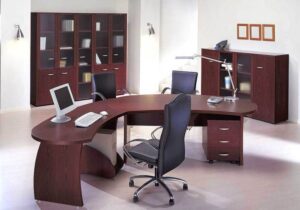

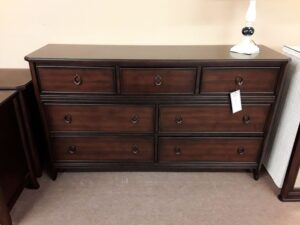
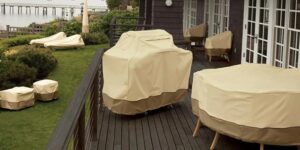
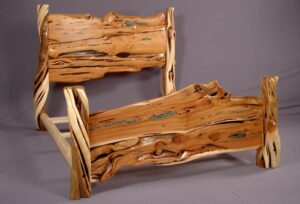
Leave a Comment